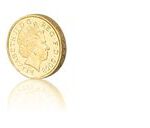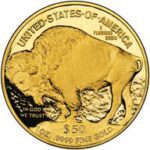How to Buy Gold in My IRA: A Step-by-Step Guide for Researchers
Gold has always held a unique allure for investors. Its timeless appeal as a store of value and hedge against economic uncertainties make it a compelling addition to investment portfolios. Researchers, like many other investors, often seek ways to incorporate gold into their financial strategies. One avenue for achieving this is by utilizing an Individual Retirement Account (IRA) to invest in gold. In this comprehensive guide, we will take you through the entire process, providing researchers with the knowledge and tools needed to buy gold in their IRA.
I. Introduction
A. The Appeal of Gold as an Investment
Gold, often referred to as the “king of precious metals,” has a longstanding reputation for preserving wealth and acting as a safe haven during times of economic turbulence. Its intrinsic value and universal acceptance make it a sought-after asset in investment portfolios.
B. The Benefits of Using an Individual Retirement Account (IRA)
IRAs are tax-advantaged savings accounts designed to help individuals save for retirement. They offer several tax benefits that can enhance the growth of your retirement savings, making them a valuable tool for achieving long-term financial goals.
C. Purpose and Scope of the Guide
The purpose of this guide is to provide researchers with a step-by-step roadmap for buying gold within their IRA. We will cover everything from understanding the basics to managing your gold investment, ensuring you are well-equipped to make informed decisions.
II. Understanding the Basics
A. What is an Individual Retirement Account (IRA)?
IRAs come in various forms, but the two primary types are Traditional IRAs and Roth IRAs. Researchers should also consider self-directed IRAs for more flexibility in investment choices.
1. Traditional vs. Roth IRAs
Traditional IRAs allow for tax-deductible contributions, while Roth IRAs feature tax-free qualified withdrawals. Each type offers its unique tax advantages.
2. Self-Directed IRAs
Self-directed IRAs permit investors to choose from a wide range of investments, including gold, giving them greater control over their retirement assets.
B. Types of Gold Investments Eligible for IRAs
1. Physical Gold (Coins and Bars)
Investors can purchase physical gold, such as gold coins and bars, and hold them securely within their IRA. However, the gold products must meet specific purity standards to be eligible.
2. Gold Exchange-Traded Funds (ETFs)
Gold ETFs offer a convenient way to gain exposure to gold without the need for physical ownership. These funds are traded on stock exchanges and closely track the price of gold.
3. Gold Mining Stocks and Mutual Funds
Investors can also explore gold mining stocks or mutual funds specializing in gold-related assets as part of their self-directed IRA.
III. Eligibility and Compliance
A. IRS Rules on Gold Investments in IRAs
Understanding IRS regulations is crucial when investing in gold within an IRA. Some types of gold investments are prohibited, and it’s essential to choose an eligible custodian to hold your IRA assets.
1. Prohibited Investments
The IRS prohibits certain investments within IRAs, including collectibles and life insurance. Gold investments must meet specific criteria to be eligible.
2. Eligible Custodians
Select a reputable IRA custodian with expertise in managing self-directed IRAs. Consider factors such as fees, reputation, and the range of services offered.
B. Determining Your Eligibility
Before proceeding, researchers should assess their eligibility for IRA contributions based on factors like income and age. Contribution limits may also apply.
1. Contribution Limits
The IRS sets annual contribution limits for IRAs. As of 2021, individuals under 50 can contribute up to $6,000, while those 50 and older can contribute up to $7,000.
2. Income Requirements
Income limits may impact eligibility for Roth IRAs. Researchers should evaluate their income to determine the suitability of different IRA types.
C. Establishing a Self-Directed IRA
To invest in gold within an IRA, researchers need to establish a self-directed IRA. This process involves selecting a custodian and completing the account setup.
1. Selecting a Custodian
Choose a custodian with a solid track record in managing self-directed IRAs. Research their fees, reputation, and the breadth of services they offer.
2. Opening the Account
Follow the custodian’s procedures to open a self-directed IRA account. Be prepared to provide necessary documentation and personal information.
IV. Funding Your Gold Investment
A. Rollover vs. Contributions
Researchers must decide how to fund their self-directed IRA for gold investments. They can choose between rolling over funds from existing retirement accounts or making annual contributions.
1. Rollover from Existing Retirement Accounts
Consider transferring funds from existing retirement accounts, such as 401(k)s or other IRAs, into your self-directed IRA to finance your gold investment.
2. Annual Contributions
Contributing annually to your self-directed IRA within IRS limits is another funding option. Researchers should be aware of the tax implications associated with their chosen funding method.
B. Contribution Limits and Deadlines
Stay informed about annual contribution limits and deadlines set by the IRS to maximize your retirement savings potential.
C. Tax Implications of Funding
Researchers should understand the tax consequences of their chosen funding method, whether it’s a rollover or annual contributions. Consulting a tax professional may be advisable to ensure compliance with IRS guidelines.
V. Buying Physical Gold in Your IRA
A. Purchasing Physical Gold within an IRA
Investors can indeed buy physical gold, such as gold coins and bars, within their IRA. However, the gold products must meet specific purity and authenticity standards to be eligible.
B. Criteria for Eligible Gold Products
To ensure eligibility, it’s essential to select physical gold products that meet the IRS requirements for purity and authenticity. Researchers should work with reputable dealers when acquiring physical gold.
C. Storage and Insurance Considerations
Proper storage and insurance are critical when holding physical gold within an IRA. Researchers should explore secure storage options and consider insurance coverage to protect their investment.
VI. Investing in Gold ETFs with Your IRA
A. Using an IRA to Invest in Gold ETFs
Gold ETFs offer a convenient way to gain exposure to gold without the need for physical ownership. Researchers can use their self-directed IRA to purchase and hold Gold ETFs.
B. Advantages and Disadvantages of Gold ETFs
Researchers should consider the advantages and disadvantages of Gold ETFs, including lower costs, liquidity, and ease of trading, when making investment decisions within their IRA.
C. Monitoring and Managing Gold ETF Investments
Developing a strategy for monitoring and managing Gold ETF investments within a self-directed IRA is essential. Regular portfolio reviews ensure alignment with retirement goals.
















